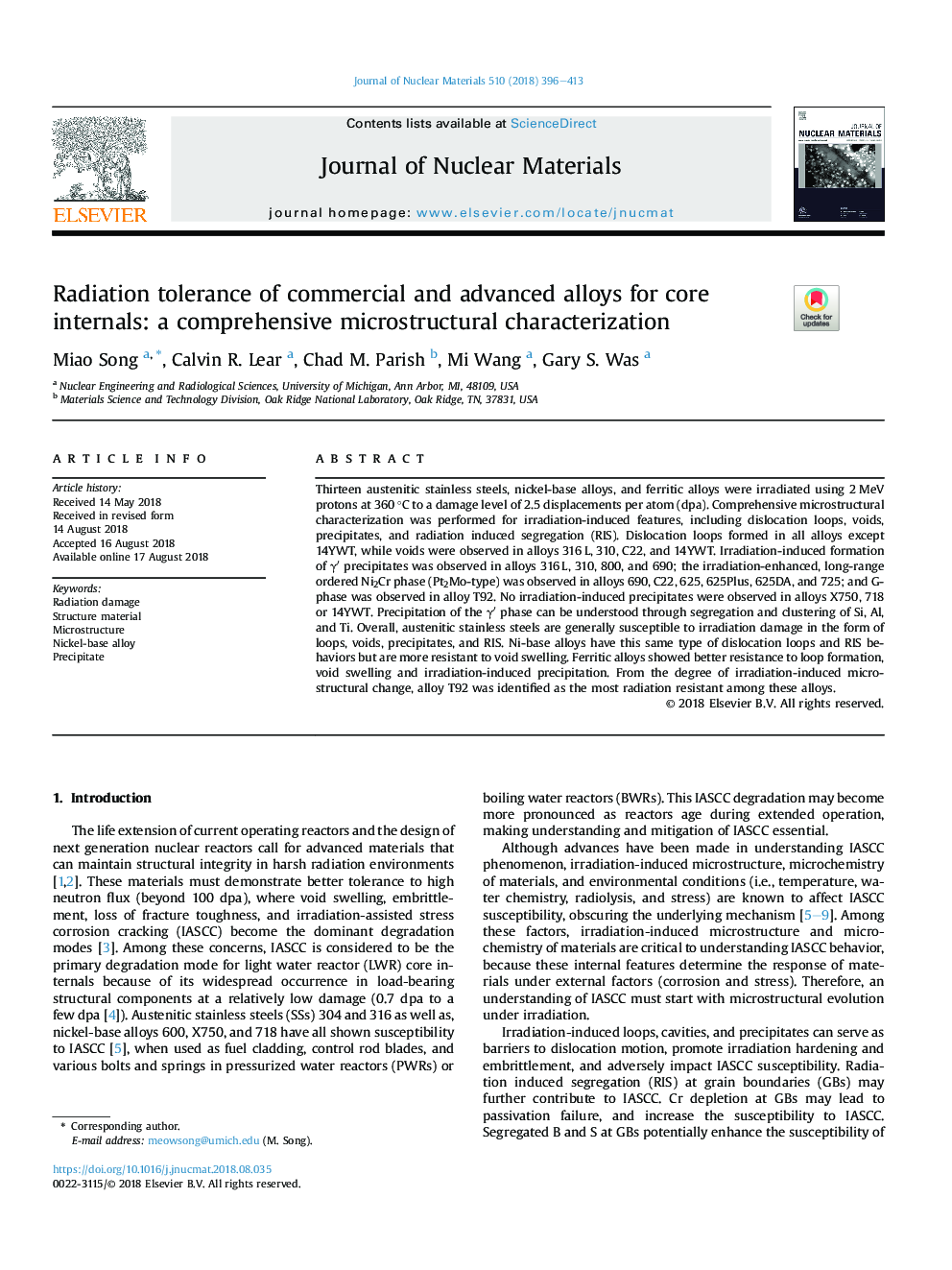| کد مقاله | کد نشریه | سال انتشار | مقاله انگلیسی | نسخه تمام متن |
|---|---|---|---|---|
| 11006991 | 1514136 | 2018 | 18 صفحه PDF | دانلود رایگان |
عنوان انگلیسی مقاله ISI
Radiation tolerance of commercial and advanced alloys for core internals: a comprehensive microstructural characterization
ترجمه فارسی عنوان
تحمل تابش آلیاژهای تجاری و پیشرفته برای هسته های اصلی: ویژگی های ریز ساختاری جامع
دانلود مقاله + سفارش ترجمه
دانلود مقاله ISI انگلیسی
رایگان برای ایرانیان
کلمات کلیدی
آسیب تابشی، ساختار مواد ریز ساختار، آلیاژ پایه نیکل، رسوب،
موضوعات مرتبط
مهندسی و علوم پایه
مهندسی انرژی
انرژی هسته ای و مهندسی
چکیده انگلیسی
Thirteen austenitic stainless steels, nickel-base alloys, and ferritic alloys were irradiated using 2â¯MeV protons at 360â¯Â°C to a damage level of 2.5 displacements per atom (dpa). Comprehensive microstructural characterization was performed for irradiation-induced features, including dislocation loops, voids, precipitates, and radiation induced segregation (RIS). Dislocation loops formed in all alloys except 14YWT, while voids were observed in alloys 316â¯L, 310, C22, and 14YWT. Irradiation-induced formation of γⲠprecipitates was observed in alloys 316â¯L, 310, 800, and 690; the irradiation-enhanced, long-range ordered Ni2Cr phase (Pt2Mo-type) was observed in alloys 690, C22, 625, 625Plus, 625DA, and 725; and G-phase was observed in alloy T92. No irradiation-induced precipitates were observed in alloys X750, 718 or 14YWT. Precipitation of the γⲠphase can be understood through segregation and clustering of Si, Al, and Ti. Overall, austenitic stainless steels are generally susceptible to irradiation damage in the form of loops, voids, precipitates, and RIS. Ni-base alloys have this same type of dislocation loops and RIS behaviors but are more resistant to void swelling. Ferritic alloys showed better resistance to loop formation, void swelling and irradiation-induced precipitation. From the degree of irradiation-induced microstructural change, alloy T92 was identified as the most radiation resistant among these alloys.
ناشر
Database: Elsevier - ScienceDirect (ساینس دایرکت)
Journal: Journal of Nuclear Materials - Volume 510, November 2018, Pages 396-413
Journal: Journal of Nuclear Materials - Volume 510, November 2018, Pages 396-413
نویسندگان
Miao Song, Calvin R. Lear, Chad M. Parish, Mi Wang, Gary S. Was,
